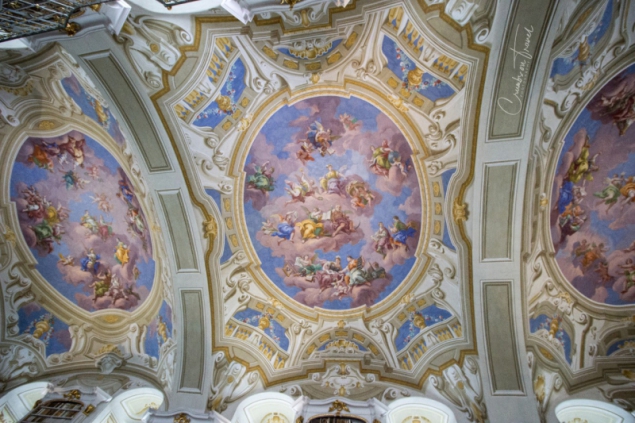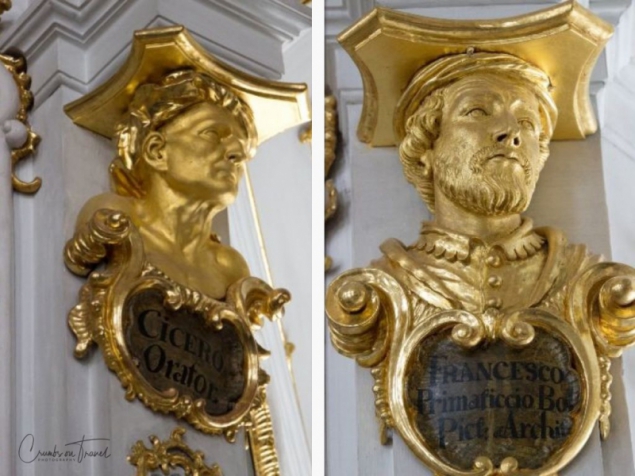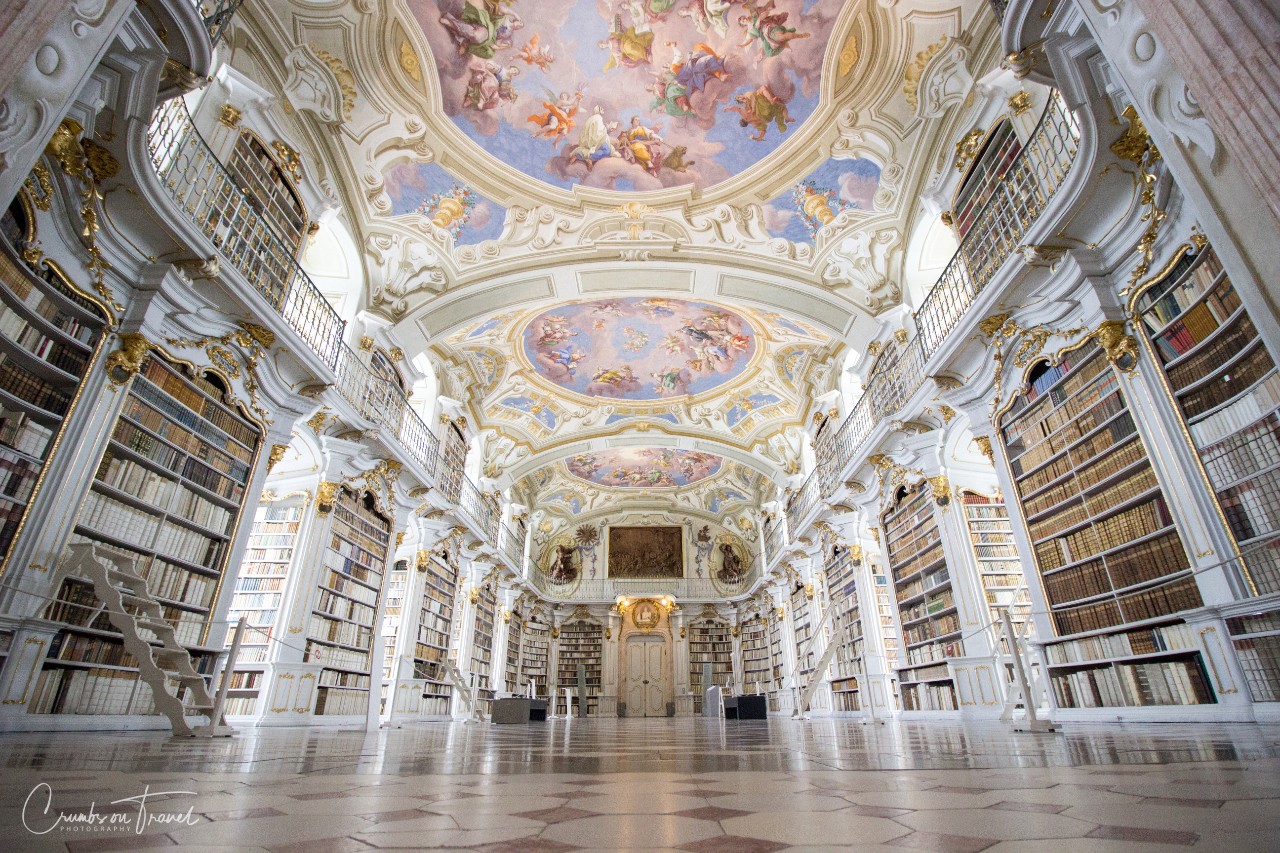Admont Abbey is the oldest remaining monastery in Upper Styria and hosts the largest monastery library of the world. But strangely it is not an UNESCO site.
I had the possibility to see this magnificent library just a few weeks ago with my friend Andreas from Graz. I saw last summer some photos of the place and told him immediately that I would like to see it. So we did last fall. It is just a two hours drive from Graz by car.
We arrived at a light rainy late morning and found some parking on the abbey ground. As we wanted to visit the library with a guided group we bought immediately a ticket. We had another hour of time before it started, and we were hungry. In the abbey restaurant we found a warm nice place to sit and yummy food to order.
Restored and full we were ready for the library when the guided tour started.
The abbey was found in 1074 by Archbishop Gebhard of Salzburg with the legacy of Saint Hemma of Gurk. The Benedictine monastery is located on the Enns river and is known for its Baroque architecture. In the middle ages the monastery prospered and had a very productive scriptorium. Artistically the abbey was known for brother Benno Haan, an ecclesiastical embroider, and the sculptor Joseph Stammel (both of the 17th/18th century).
In April 1865 the big disaster: a fire destroyed nearly the whole monastery but the library. 30 years later the reconstruction was still not completed.
WW II was another hard time, many of its art was lost, the Benedictine monks forced to go.
Today the abbey is flourishing again and a tourist attraction.
The library, where we started our visit of the abbey, was built in 1776. The designs are from architect Joseph Hueber. The hall is 70 m/230 f long, 14 m/46 f wide and nearly the same height. The library has more than 200.000 volumes, in the hall are stored around 70.000. The jaw dropping ceiling has 7 cupolas, all decorated with frescoes by Bartolomeo Altomonte (he was already 80 years old when he painted alone all those frescoes). They show the stages of human knowledge ending in the Divine Revelation. The 48 windows make the library a room full of light and highlight the bright, vivid colors. The sculptors of Joseph Stammel are a little different, but very interesting. Don’t miss giving them a ‘deeper’ look!
The oldest manuscript is from the time of the founder and is one of over 1.400 manuscripts. In addition, the library holds more than 900 incunabulae (book or pamphlet printed before 1501).
The hall is divided into three parts: in the central part there is everything about the church generally, in the north side there you find theological literature and the last one contains all other science literature.
We visited also one of the museums. I saw some modern art, which I found very strange after so much beauty in the library. But I enjoyed very much the church embroidery.
My friend walked to see the natural history museum, me instead to the gardens and the church. I skipped the garden, it was raining too much. The church is bright and much simpler than the library. The pulpit is beautiful and the high, colorful windows behind the altar are amazing.
She is in neo-Gothic style and built after the fire in 1865. She is dedicated to Saint Blaise, an Armenian physician and bishop of the 3rd century AD.
It was the best way to spend a rainy day in Upper Styria. I enjoyed every single moment, had a great lunch, saw one of the most beautiful libraries I can imagine, relaxed in a beautiful church and had even a short, nice walk in the monastery gardens. We spent several hours at Admont Abbey and can be easily also more if you take more time for the several museums they offer.

















(“A young woman was once engaged to a knight but was unfaithful while he was at the crusades. When he returned she was claimed that she had sworn to enter a nunnery. When instead she married his rival she changed into skeleton at the wedding – at least according to the legend”)
Admont Abbey, Styria/Austria
For further information:
Here you can read more about the Library











































